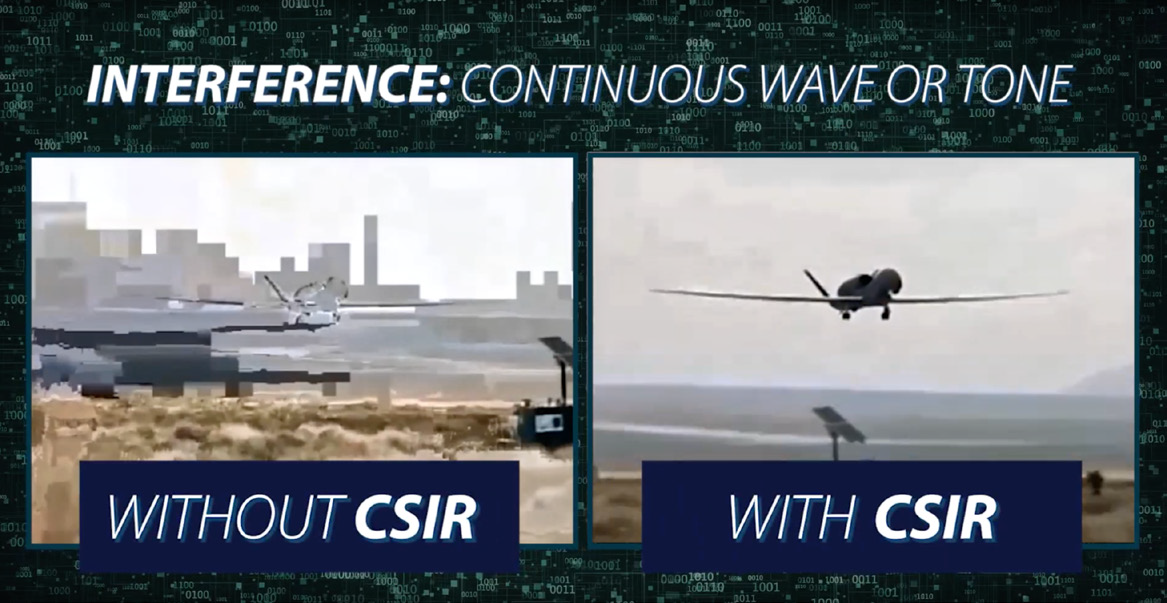A growing concern for military and government SATCOM users exists with radio frequency (RF) interference and jamming in satellite communications (SATCOM). With increasing spectral usage and frequency overlap, jamming incidents have become commonplace.

Add to this picture Low Earth Orbit (LEO) satellite constellations and 5G terrestrial players, and there is a growing number of jamming incidents occurring to the SATCOM landscape.
Military communication systems have a double threat — not only do they need to deal with rising congestion, but ever increasingly, more sophisticated direct jamming attempts are happening to outright deny communications. These interfering signals can be intentional, such as adversaries attacking military communications by signal jamming, or through unintentional interference.
There has been a great deal of effort spent in recent years on concepts such as path diversity and resilient waveforms. Although these techniques can be helpful, they have been designed on the singular idea of avoiding interference, such as using an alternate path to avoid interference or hopping to frequencies with the hope of avoiding interference.
Given that military satellite communications (MILSATCOM) and government SATCOM are critical communications assets, the stakes can be high to employ technology to counter jamming incidents. Simply detection— or even locating a geographic origin of an interference — is simply not enough. Mitigation strategies that include interference removal and network resiliency should be an integral part of the system architecture.
This growing incidence of interference or jamming, intentional or not, highlights the need for improved mitigation capabilities, not just avoiding interference. An ideal solution should:
• Mitigate multiple non-cooperative interferer types;
• Require no prior knowledge of the interferer;
• Introduce minimal implementation loss;
• Introduce minimal latency;
• Minimize architectural complexity; and
• Require no additional bandwidth.
One of the key elements of SATCOM networks is the availability and use of the radio frequency spectrum. The introduction of noise or interference, whether it be intentional or unintentional, can degrade a SATCOM network, sometimes rendering that network completely unusable.
Due to the finite amount of available bandwidth, some organizations and agencies restrict the spectrum for use with specific applications and services. Despite their efforts, the ever-growing demand for wireless capability still results in congestion and interference within the RF spectrum. The SATCOM industry has recognized this surge in devices and usage by responding with innovations to address the situation.

Among the effective technological solutions is signal excision, which is any technology, either analog or digital, that can identify and remove an interfering signal without the need for additional bandwidth.
Signal excision contrasts with the traditional method of anti-jam, which relies on spread spectrum necessitating, of course, a large spread factor and thus enormous amounts of bandwidth to overcome even small jamming signals. Quite often, there simply isn’t enough available bandwidth in theatre to overcome a threat with spread spectrum technology.
Employing a signal excision anti-jam as a first line of defense against interference for the military can be beneficial. Signal excision systems can remove a wide range of interferer types and that is important for critical communications.
In the real world, there are various types of interferers. These include carrier waves (CWs), modulated carriers, sweeping tones, multiple CWs or combs, hopping carriers, and at times, a combination of multiple threats.
Safeguarding critical communications signals is important and, any satellite remote attempting to operate in a congested environment, especially where adversaries may be intentionally jamming signals, needs to have signal excision, anti-jam technology in place.

iDirect Government (iDirectGov) addresses the concern of interference through its Communications Signal Interference Removal (CSIR — product video at this direct link...), which eliminates an interfering signal from the authorized signal of interest (SOI).
With only the SOI’s center frequency, bandwidth and symbol rate information, CSIR will monitor and remove an interfering signal in real time.
CSIR can remove a variety of unwanted signals, whether they are modulated carriers, unmodulated tones or interference that changes characteristics (such as burst or frequency hopping) for anti-jam use for defense and government.
The power difference between the SOI and the interferer can be quite small when using CSIR. This is important as adversaries are always implementing signals intelligence (SIGNET) so they can attack military and government spectrum use by jamming transmissions used for radio communications, radar and various operations.

As a mature digital signal processing solution, CSIR is designed to excise an interfering signal before it reaches the receiver’s demodulator and decoder.
Based on the SOI’s information noted above, CSIR can monitor and remove an interfering signal with as little as 1dB of power separation from the SOI. Additionally, CSIR has little to no effect on the SOI’s signal quality.
Another substantial benefit of CSIR is the relative compactness of the field-programable gate array (FPGA) image, making CSIR technology particularly portable to existing, FPGA-based, radio systems.
CSIR allows defense, homeland security, first responders and other government users to have reliable and secure communications to support their critical missions. Whether attacks are intentional or unintentional, the CSIR interference mitigation is designed to ensure holistic communication integrity and availability.

Interference is prevalent in many operating environments, and data shows it to be on the rise. Any satellite remote attempting to operate in a congested environment, especially where adversaries may be intentionally jamming signals, can benefit from CSIR.
www.idirectgov.com
Karl Fuchs is the Senior Vice President of Technology at iDirect Government (iDirectGov), (iDirectGov), a U.S. corporation that is a trusted partner of the U.S. government and has been for more than
18 years. All of the company’s employees are U.S. citizens, with a third being U.S. military veterans and more than 60% holding U.S security clearances.

Fuchs leads iDirectGov’s team of federal systems engineers and serves as chief architect for new product integration and specialized technology including transmission security (TRANSEC), Communication Signal Interference Removal (CSIR™) anti-jam technology and Open Antenna Modem Interface Protocol (OpenAMIP). All Defense-grade products sold by iDirectGov are designed, developed, assembled, programmed and verified within the United States.
Fuchs leads iDirectGov’s team of federal systems engineers and serves as chief architect for new product integration. Fuchs has more than 20 years of experience in the areas of technology and the federal government and is a Senior Contributor to MilsatMagazine; kfuchs@idirectgov.com


